Up to 50% Clearance Clothing & Footwear + Extra 25% Off REI Outlet.
Maybe you’re one of those backpackers who’s intrigued by the concept of ultralight but you’re not quite ready to make the plunge. Maybe you want something with a bit more support that’s able to carry slightly heavier loads more comfortably than, say, a frameless ultralight pack. After all, if you have more traditional gear, it probably weighs quite a bit more than a slimmed down UL kit. Well we’ve got good news. We tested what might just be the perfect pack for backpackers who want to reduce weight without fully committing to going ultralight, who want comfort and functionality without sacrificing anything, and who might be considering transitioning to ultralight over time: The Deuter Aircontact Ultra 40+5, which excels at fit, function, and comfort and does it all at a lower base weight. Here’s what we thought of it.
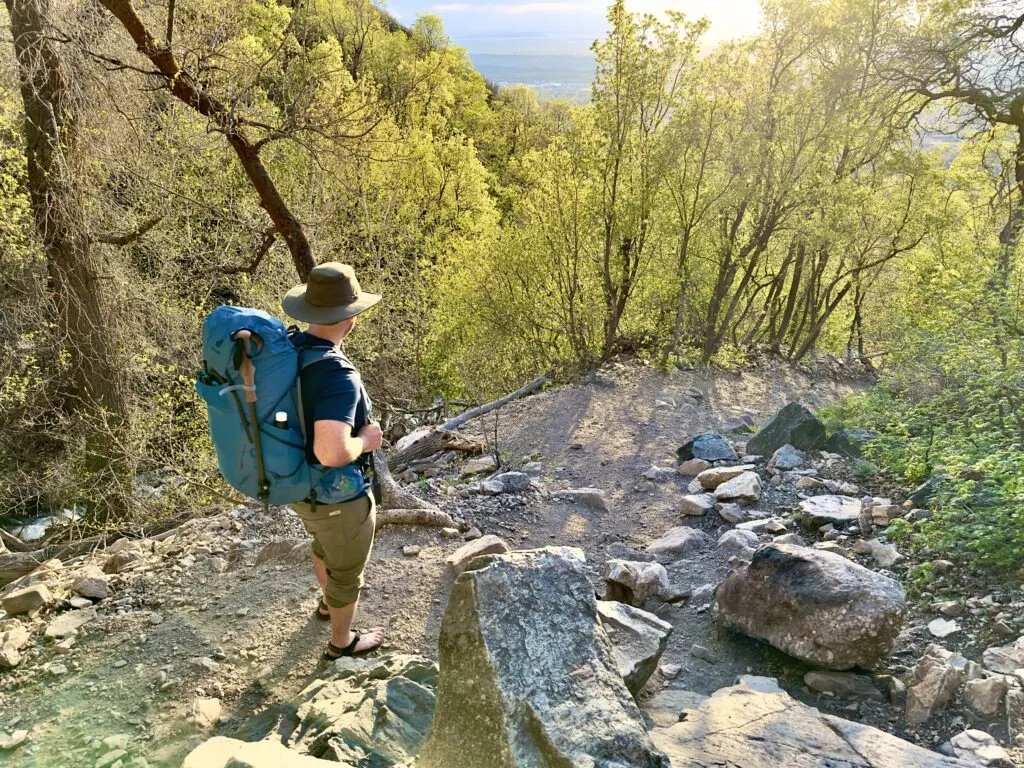
Deuter Aircontact Ultra: The Features
When it comes to backpack features, the Deuter Aircontact Ultra has plenty, especially for a lightweight pack:
- Space in the back panel for air to move, which aids in breathability
- Lightweight frame made of elastic spring steel
- Lumbar pad for effective load transfer onto the pelvis
- Ergonomically shaped Active Fit shoulder straps with soft-edge finishes
- Load adjustment strap
- Adjustable sternum strap
- Ergonomic, breathable, padded hip belt
- Removable and reposition-able side compression straps
- Plenty of attachment loops
- Removal lid with zipper compartment that’s also height adjustable
- Extendable capacity (by 5L with lid attached)
- Hydration reservoir sleeve compatible with 3.0 liter bladder
- Signal whistle
- Stretchy mesh side and front pockets
Like I said: feature-rich. But how did those features function in practice? We tested the pack on local trails recently to find out.
Deuter Aircontact Ultra: The Review
Right off the bat, let me just say that I am not mad at this pack. It sports a lot of useful functionality for a pack this light (2.65lbs). Starting with all of the customizable attachment points and loops, which are located all over the bag and make it easy to use paracord or bungees to lash things to the outside of the pack so you can hang wet clothes to dry, quickly clip on accessories, etc. The loops also make it stupendously easy to customize where the compression straps–which are removable and customizable–are routed.
That said, I’m tempted to simply remove the compression straps on the side of the pack altogether for one reason: They are designed to go around the outside of the water bottle pocket, meaning they’re absolutely useless if you want to compress your pack and ALSO want to use your water bottle pockets. You just can’t get a bottle in there if the straps are compressed at all.
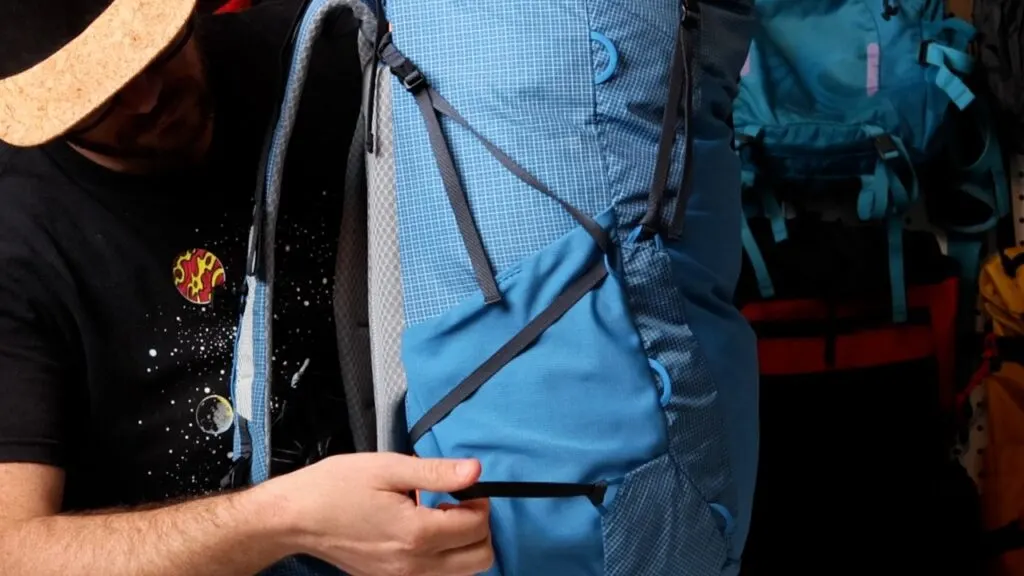
And honestly, those stretchy pockets (including the front stash pocket and the side water bottle pockets) are already a bit difficult to use without the additional webbing restricting access. I appreciate that those stretchy pockets exist–in fact, they’re necessary in my opinion–but when the pack is full, they are very snug and not stupendously stretchy, meaning it’s difficult to stuff anything other than a rain jacket or slim water bottle into the pockets.
It was a tight squeeze just sliding in my Luna sandals in the front stash pocket and nearly impossible to get a 32oz Nalgene into the water bottle pockets while wearing the backpack. A smaller water bottle is a bit easier, but still pretty difficult.
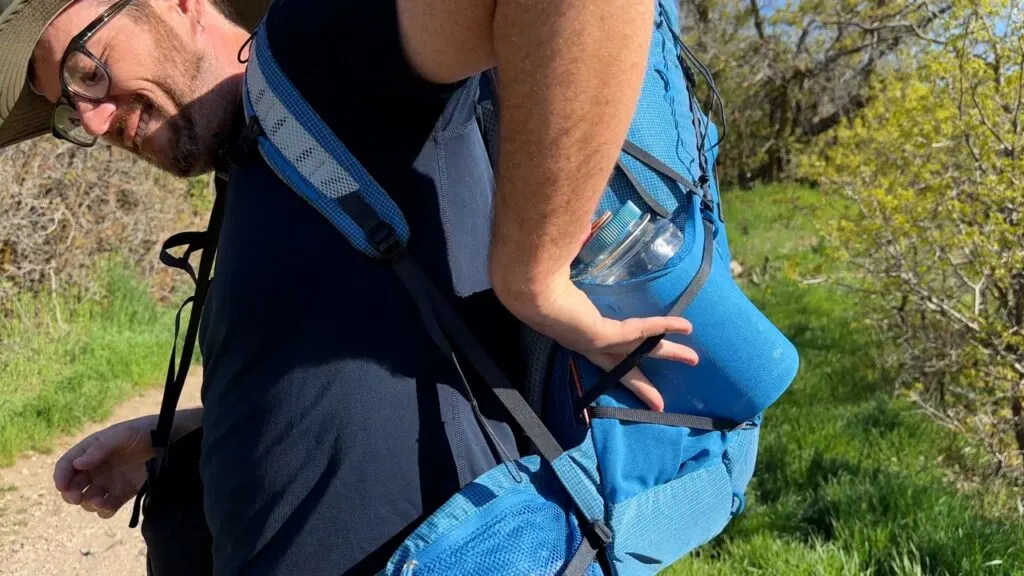
There’s also an adjustable sternum strap, of course. It’s perfectly functional, but it’s a little tricky to remove and adjust. They’re pretty tight slide-on and -off clips. But honestly, once you get the pack fitted to your body type and size, chances are, you’re not going to need to remove and relocate those again as long as you’re not sharing your pack with a friend or family member. The adjustment points aren’t endlessly adjustable slide rails, which I tend to prefer for the extended versatility they offer and the ease of dialing in the perfect fit, but these do the trick.
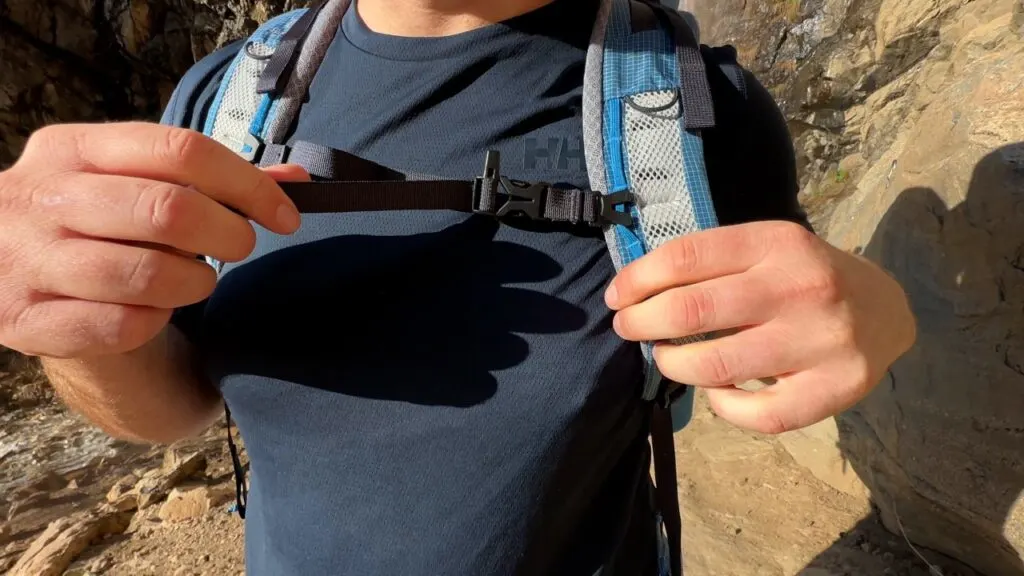
On a more positive note, I loved that the whole lid is completely removable. And not removable in the way that some packs allow you to remove the lid but then there’s really no solution for covering up the opening at the top. Or the solution is to add a massive amount more fabric.
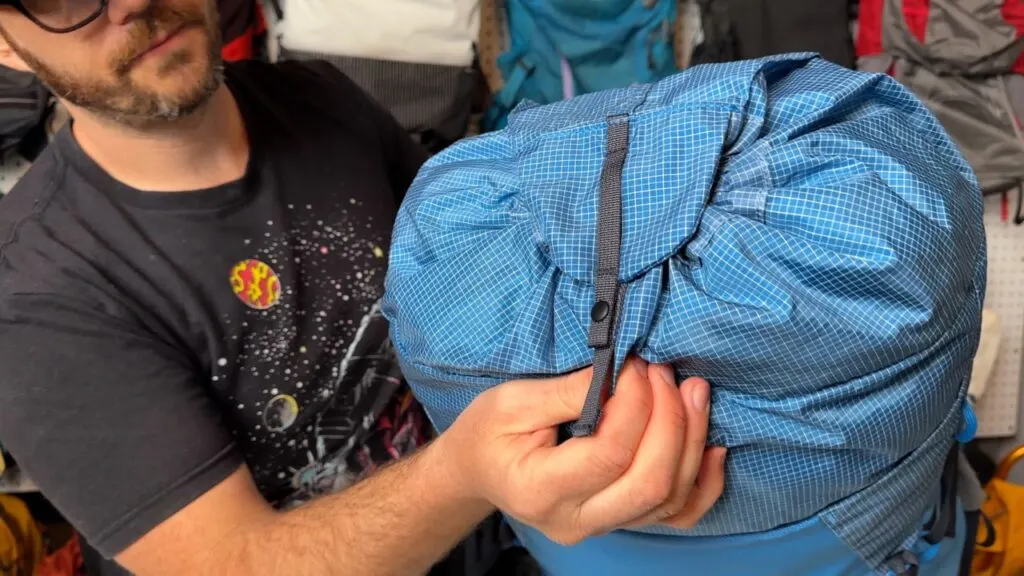
On the contrary, if you take the lid off and cinch the main opening closed, there’s this cute little fabric flap fitted with a snap that covers the teeny hole that’s left, which is perfectly suitable for keeping out any debris or light moisture from the inside of the bag itself. Speaking of moisture, the bag does have a PFAS-free DWR finish to keep out some precipitation.
If you do leave the lid on, there’s a nice spacious pocket in it, which I always appreciate in a backpack. It’s a great place to stash extra snacks, a first aid kit, headlamp, etc. And there’s plenty of room in there for all that stuff and more. The main compartment has a sleeve and hanger for a hydration reservoir and there’s an output in the middle top of the back so you can route the hose through in whichever direction you prefer.
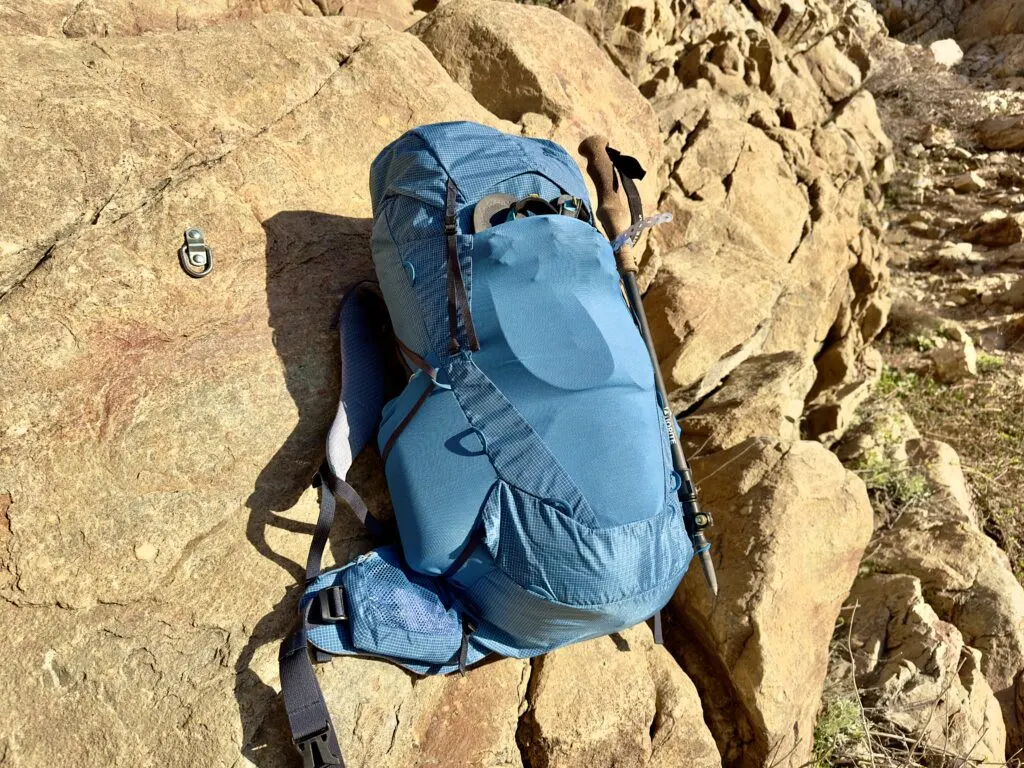
Speaking of places to stash things, there are also nice big pockets on the hip belt. Now, I will say that they’re located pretty far back on your hips, but I did like how much room there was inside to stick snacks, trash, hand sanitizer, sunscreen, whatever. And there’s one on each hip, so plenty of space.
But let’s talk about the harness and back panel for a sec. The pack is called the Aircontact, so it reasons that it would be a bit more breathable than maybe some of Deuters’ other options. There’s certainly more mesh and breathable padding on either side of the spine, with a nice open space to encourage ventilation. The big padded lumbar support is a bit less breathable, but it is comfortable and supportive, making it feel easy to carry heavier loads.
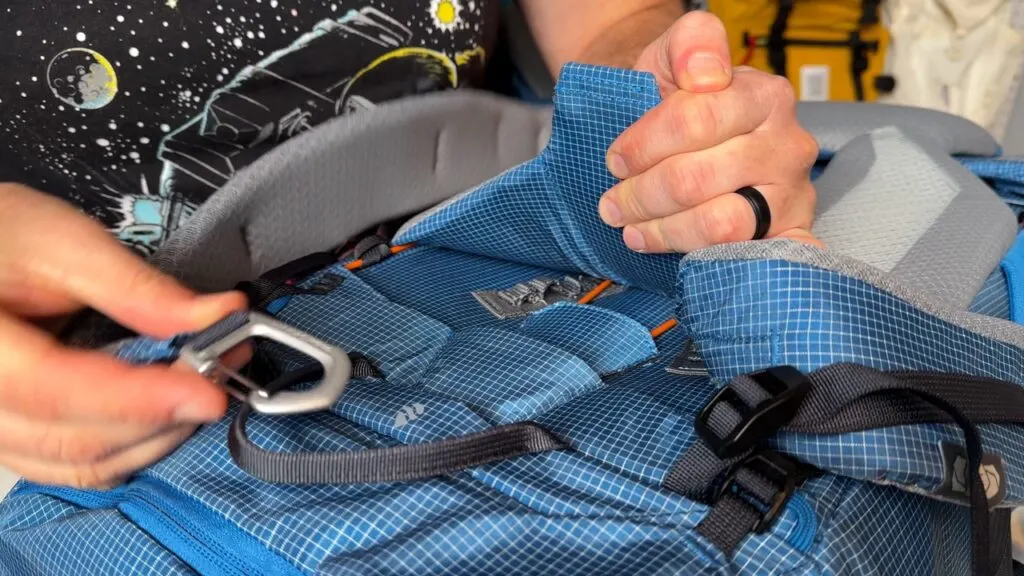
And the whole thing is fairly easy to adjust to really dial in the right fit for your body. Just pull the top of the back panel out and adjust the carabiners that hold the harness in place. You can slide them up or down depending on your desired strap height. Speaking of fit, these packs are only available in one fit size, but do come in a women’s (SL) version.
The straps themselves are only minimally padded, but I didn’t have a problem with that. They aren’t super wide, which I like because they tend to sit on narrow shoulders better, and they’re made of flexible materials so they didn’t feel stiff or like they needed to be broken in.
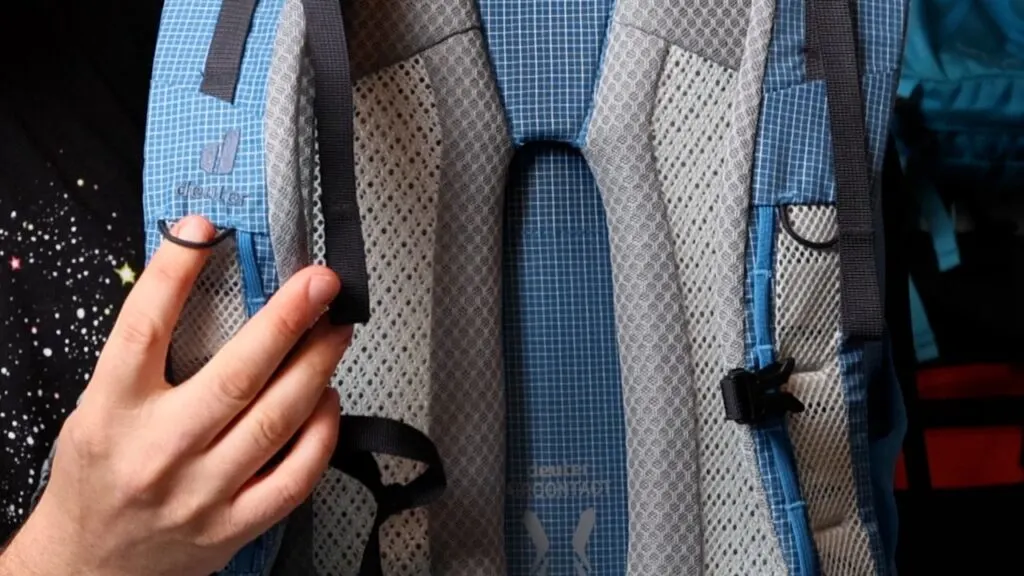
The pack even comes complete with load lifters, a must if you are trying to load this pack to its weight limit (Deuter doesn’t state what that weight limit is, but I’m guessing around 40lbs or so). What I am missing from the straps is routing for a hydration hose. There are little tiny loops on the straps, but unless your hydration hose is fully removable from your reservoir and you are able to route the hose through backward, it’s not terribly useful. You can’t fit a mouthpiece through these tiny loops. Routing isn’t completely necessary on a pack, of course, but I find it super useful at keeping unruly rubber hoses in place when you’re taking the pack on and off.
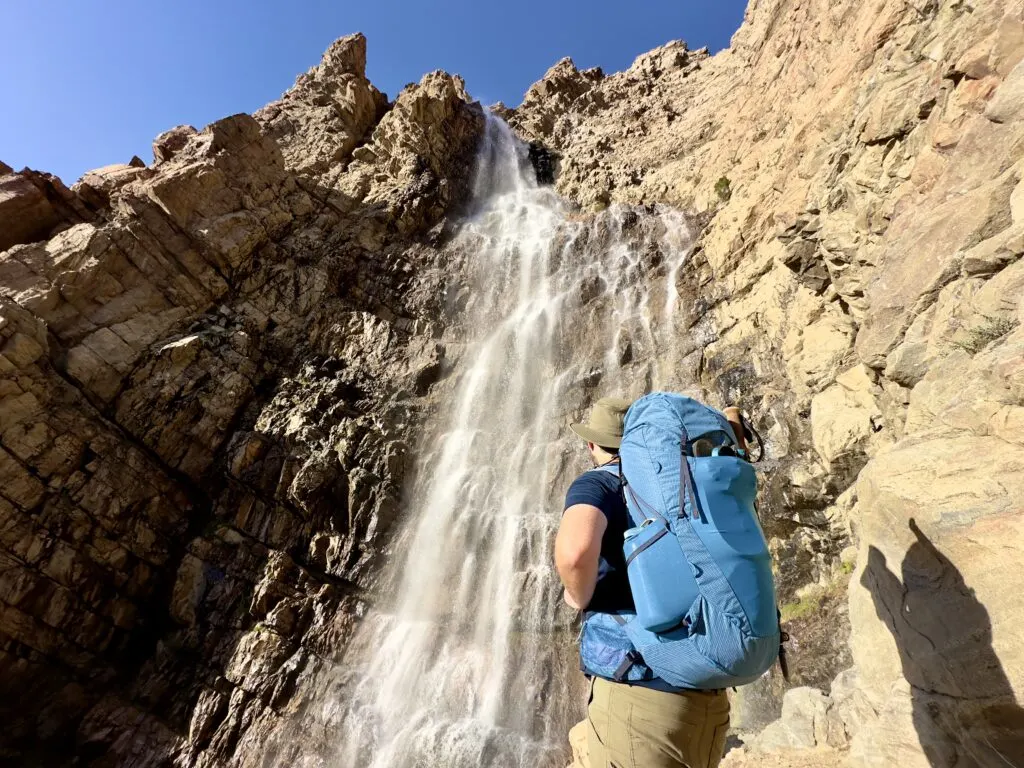
Deuter Aircontact Ultra: Bottom Line
Basically, the Deuter Aircontact Ultra is a solid pack that fits beautifully right between overbuilt, heavy backpacks, like the Mystery Ranch packs we’ve reviewed in the past and true ultralight packs like the LiteAF or Gossamer Gear Gorilla, which are best suited for much lighter loads.
In fact, I would put The Aircontact Ultra in a similar category as the Osprey Eja Pro 55 that we reviewed a while back. Not AS light, but close, and it can carry more weight. It’s a lighter weight pack that can still carry moderately heavy loads, but for less weight all while maintaining the comfortable carry that you expect from a fully framed backpack.
Who’s it for? Basically it’s a Goldilocks pack perfect for those transitioning to ultralight slowly or those who are happy carrying light to moderate weight but prefer a pack that is super comfortable, modular, breathable, and functional but that doesn’t add to that weight (most conventional backpacks are in the 4-6lb range). It’s also a stellar pack for ultra lighters who might be planning heavier winter trips that require more gear and clothing, or those who are looking to reduce their base weight by a few pounds without committing to the whole ultralight lifestyle. It’s the best of both worlds: comfort and reduced weight.
Would Alisha, an ultralight die-hard carry it? Well, no, not unless she’s winter backpacking, but she’s insane.
The Deuter Aircontact Ultra is available in several capacities: 40+5 and 50+5 in men’s/unisex and 35+5 and 45+5 in SL/women’s fits. And if you’re looking for a solid, functional, versatile pack that comfortable without weighing you down, this could be the one.
Sustainability
Deuter has a pretty stellar lifetime warranty and they will repair or replace your pack for any reason if something goes wrong. They are also a FairWear leader, the pack is totally PFAS free, and it’s a Bluesign and Green Button product (which is basically the Bluesign of Germany).
Deuter is also Climate Partner certified, which means any unavoidable CO2 emissions are offset through climate action projects.
Josh is a freelance video producer, DP and editor based in Ogden, UT. When he’s not out exploring the world, he loves talking movies, tech, and travel. Check out his website, joshmcdarris.com
